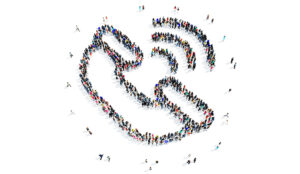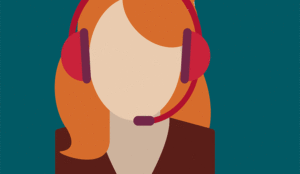Our expert panel reveal the lesser known features of outbound dialling technology you can activate to get the best results from your next campaign.
Use number validation to check data is clean before beginning your campaign
Number validation allows you to screen your telephone numbers to check if they are live and valid, before loading them into your dialler and starting your outbound campaign.
You can have the most sophisticated dialling set up in the world, but if your contact data is of poor quality, you’ll be wasting time and money.
Make sure your provider offers a real-time network check rather than just validating data against a database.
Also ask your provider if the validation checking is done in a non-invasive way. Some solutions actually place an audio call to validate a number, which can disturb your customers.
TPS cleanse your data to avoid regulatory fines
Do you TPS cleanse your data? Some call providers actually offer live TPS cleansing at no extra cost. If this is done at network level, the numbers you call will be checked for TPS registration before each call is actually connected.
This means you no longer have to shell out to TPS cleanse your data, taking the risk that some of your numbers may have been registered with the TPS since you last cleansed it.
Look out for live TPS cleansing if you’re carrying out unsolicited sales and marketing calls, it’s a hidden gem that can save you thousands of pounds in regulatory fines.
With thanks to Martyn King at Nexbridge
Precision Dialling uses intelligent information to achieve live connections
Precision Dialling uses intelligent information to program the dialler to achieve live connections by dialling:
- At the right time
- In the right place
- With the right message and medium to catch the contact’s attention
How do you get this intelligent information? Precision Dialling is predicated on the idea that you have some knowledge about each customer and can then take that intelligence to program your dialler. So you need good management reports and records.

Ken Reid
The key is looking at individual customer records and using your information about when inbound callers called you to decide when to call them.
Think about it – if a person calls you at, say, 4pm it’s a good bet that they will be receptive to you calling them around that time. It’s not rocket science but it has proved a revelation in making higher numbers of live connections.
It’s important to gather intelligence from all areas of your contact centre – inbound and outbound calls, emails, tweets and chats – which might give you valuable customer information.
With thanks to Ken Reid at Rostrvm Solutions
Proactively schedule service work and move work forward
I would like to share with you how our Overall 2015 Innovation Award Winner, British Gas Home Care put outbound contact at the heart of improving their planning and customer experience.
British Gas Home Care have a customer promise that means if your boiler suffers a breakdown and you ring in before 1pm they will get an engineer to you the same day.
To achieve this promise, they had to put new practices in place. This was because they used to schedule their engineers to their maximum capacity and then had no space to put in the extra breakdowns because they wanted to keep their engineers at maximum efficiency.

Dave Vernon
A large outbound team was in place to ring back customers where the engineer was not going to attend and to re-book the customer – not a very nice role. But, imagine a different way of thinking where instead of the outbound team being used to reactively address customer service failure they were the team that proactively drove work into a plan using a “glide path” methodology. So what does this mean?
It means instead of filling the plan to the top they only fill the engineers to 60% capacity and then use the outbound team as the major lever to fill the 40% capacity through proactively scheduling service work and moving forward work if capacity is under, or proactively rescheduling work as early as possible if over capacity. Also, it identifies vulnerable customers and ensures they receive a more guided support through their breakdown or service.
With thanks to Dave Vernon at The Forum
Mobile number screening can increase connect rates
Typically 1 in 3 mobiles will be turned off, roaming or unavailable. Using mobile number screening technology can save a lot of time and increase connect rates to mobiles by up to 40%.
It’s a way to intelligently check the network and establish the status of mobiles before even attempting to dial.
Rather than dialling those numbers that are turned off/unavailable or annoying customers while they are away on holiday (roaming), simply queue them for calling later on – once they do become available.

Mike Donohue
CLI presentation can help route calls to your best agents
With specific CLI presentation, numbers can be routed to specific specialist teams or individual agents. This can improve campaign results and enhance the customer experience.
Call-backs are far more likely to convert into a successful outcome, so it’s essential that your call-backs go straight to the person or team best equipped to deal with the call.
This is a far better customer experience than simply providing a generic number for your customers to call back on.
With thanks to Mike Donohue at Magnetic North
Next-generation Answering Machine Detection (AMD)
Traditional Answering Machine Detection (AMD) solutions work by listening for a pause and audible patterns during the first part of the call.
This creates a delay of several seconds in connecting to agents and also results in levels of false positives, meaning that companies accidentally hang up on some customers.

Justin Hamilton-Martin
The new generation of AMD technology is a step-change in how AMD works. It focuses on accuracy (since existing systems weeded out too many numbers that in fact had a human at the end of the line) while filtering out a lower proportion on answering machines.
It uses advanced algorithms to exclude outbound calls being connected to agents when it recognises that an answering machine is present as well as achieving a high level of accuracy.
It is also undetectable for caller and customer and removes the delay of existing systems (and those time and cost savings will add up over the day).
With thanks to Justin Hamilton-Martin at Ultracomms
Reduce your queue size with queue call-backs
There is little more frustrating to your customers than waiting in a queue for an indefinite period of time.
One way a dialler can help is through queue call-back technology. After a predefined length of time, an automated message can interrupt your hold music to provide customers with an alternative. They simply push a button, hang up the phone, and wait for an agent to call them back.
The process behind queue call-backs is simple. When a customer pushes a button to request a call-back, the dialler records their caller ID number. This is then dropped into an outbound call queue. From there, the dialler treats it as a standard call, taking care of dialling the number and passing connected calls to available agents.
With queue call-backs, agents aren’t asked to do additional work. They do not need to waste time manually dialling outbound numbers, or trying to reach customers. They concentrate their attention on delivering the best service, not contacting customers.
By offering them a simple alternative to waiting in a queue, you can ensure that your customers’ first impression of your contact centre is a good one.
Queue call-backs also help to balance calls more evenly. Rather than trying to keep up with an unexpected peak in call volumes, your agents can deal with the people who need immediate attention now, and make contact with less urgent cases when they become available.
Present mobile numbers to improve contact rates
The telephone number that people see on their mobile or caller ID display is a significant factor in whether they will take the call. Typically, people are wary of 0800, 0845, and ‘unknown’ numbers, which typically come from businesses and contact centres.

Chris Key
As a result, many outbound contact centres use the Caller ID box in their dialler settings to present a different number. However, these have been conventionally limited to local numbers.
New technology now allows contact centres to present a mobile number as their Caller ID. Mobile numbers come with a sense of importance and urgency, without the concern of unfamiliar landline area codes. As a result, customers are more likely to answer calls, giving your agents more opportunities to sell.
Crucially, using a mobile number as your contact centre’s Caller ID is in line with OFCOM regulation. Providing you own the number, it can be used with the help of new dialler technology.
With thanks to Chris Key at Hostcomm
Use speech analytics to analyse the words your best performers choose
The use of speech analytics, recording and listening software can play a key role in outbound campaigns.
Businesses can analyse the best performers in their outbound team and use technology to analyse the kinds of words and phrases they use at certain points as part of a typical interaction.
These phrases can then be shared across the group to optimise the engagement process, while phrase recognition can also be applied across a range of vertical sectors to ensure compliance with specific industry regulations.
Get better results by blending your inbound and outbound campaigns
More businesses are looking to blend their inbound and outbound approaches. They are starting to look at managing single platforms rather than trying to pull together two, typically high-end technologies supported by different IT and operational teams.

Jeremy Payne
Reporting for all interactions was previously separate, which meant that it was not possible to demonstrate positive trends in operational productivity across the entire agent pool.
If either inbound or outbound volumes are relatively low, contact centre staff can be used to assist other teams and can easily be moved using a single configuration tool. Information provided during inbound interactions can also be used to manage outbound campaigns, and help drive efficiencies across the whole business.
With thanks to Jeremy Payne at Enghouse Interactive
What have you tried to improve the success of your outbound dialling campaigns?
Author: Megan Jones
Published On: 9th Sep 2015 - Last modified: 14th Jun 2024
Read more about - Technology, Customer Satisfaction (CSAT), Enghouse Interactive, Hostcomm, Intrado, Jeremy Payne, Ken Reid, Nexbridge, Outbound dialling, Rostrvm, Telesales, The Forum, Ultra















